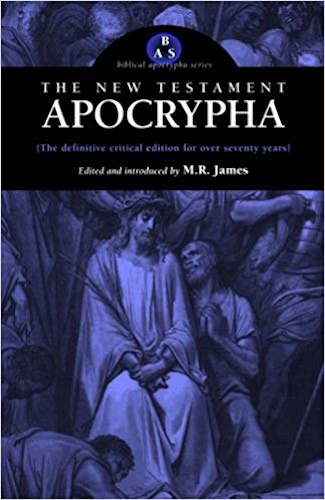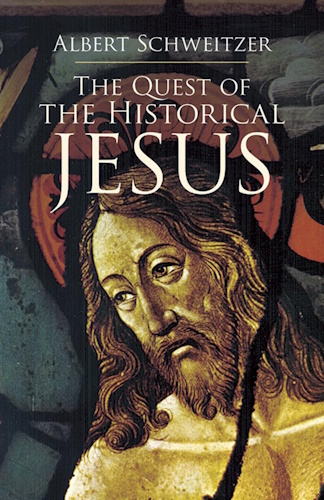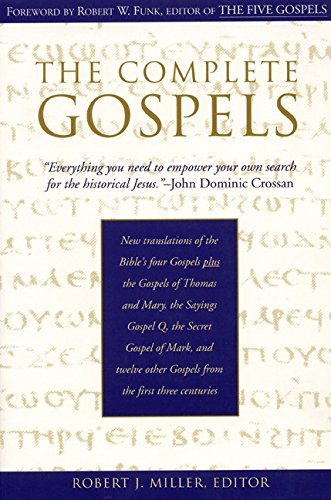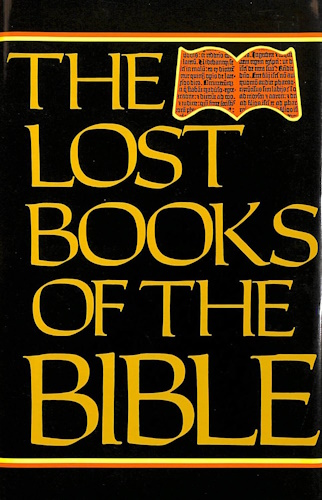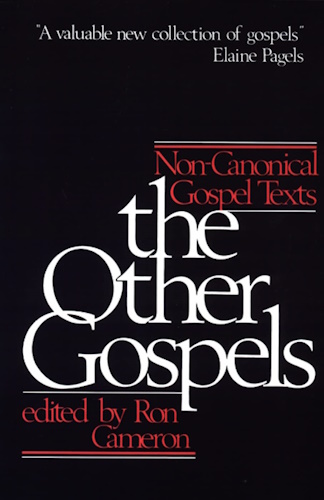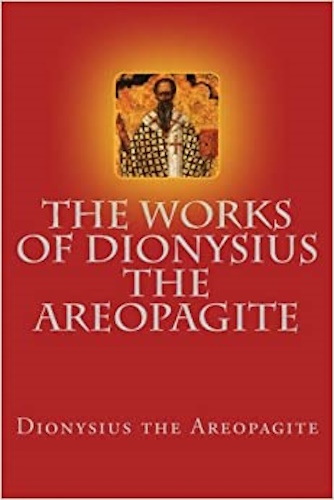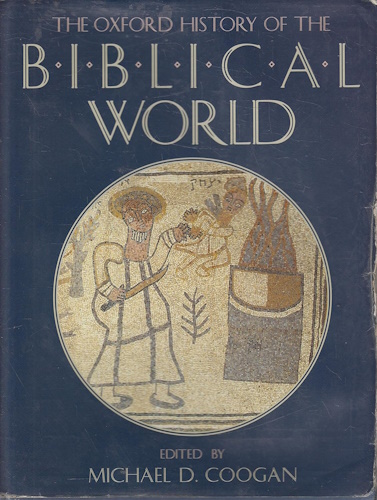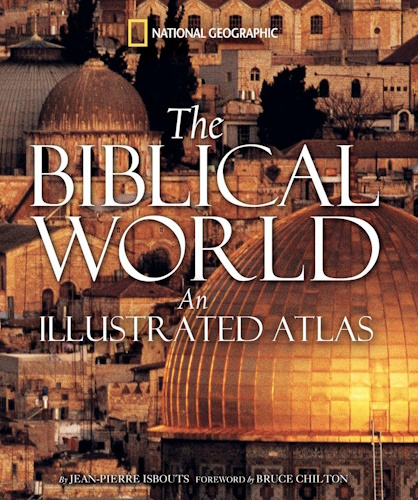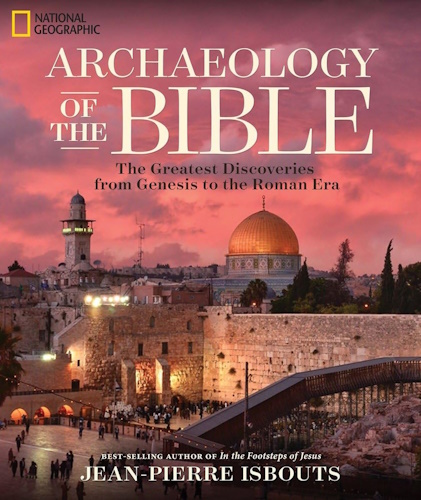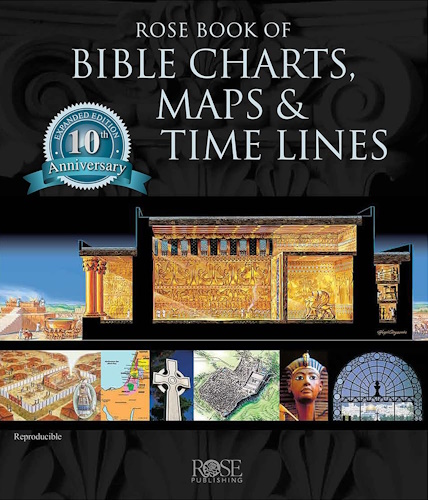
The works of Dionysius the Areopagite
On Divine Names
Caput I
TO MY FELLOW PRESBYTER, TIMOTHY,
DIONYSIUS THE PRESBYTER.
What is the purpose of the discourse, and what the tradition concerning Divine Names.
SECTION I.
Now then, O Blessed One, after the Theological Outlines12, I will pass to the interpretation of the Divine Names, as best I can.
But, let the rule of the Oracles be here also prescribed for us, viz., that we shall establish the truth of the things spoken concerning God, not in the persuasive words of man's wisdom, but in demonstration of the Spirit-moved power of the Theologians, by aid of which we are brought into contact with things unutterable and unknown, in a manner unutterable and unknown, in proportion to the superior union of the reasoning and intuitive faculty and operation within us. By no means then is it permitted to speak, or even to think, anything, concerning the superessential and hidden Deity, beyond those things divinely revealed to us in the sacred Oracles13. For Agnosia,
page 2
(supra-knowledge) of its superessentiality above reason and mind and essence—to, it must we attribute the superessential science, so far aspiring to the Highest, as the ray of the supremely Divine Oracles imparts itself, whilst we restrain ourselves in our approach to the higher glories by prudence and piety as regards things Divine. For, if we must place any confidence in the All Wise and most trustworthy Theology, things Divine are revealed and contemplated in proportion to the capacity of each of the minds, since the supremely Divine Goodness distributes Divinely its immeasurableness (as that which cannot be contained) with a justice which preserves those whose capacity is limited. For, as things intelligible cannot be comprehended and contemplated by things of sense, and things uncompounded and unformed by things compounded and formed; and the intangible and unshaped formlessness of things without body, by those formed according to the shapes of bodies; in accordance with the self-same analogy of the truth, the superessential Illimitability is placed above things essential, and the Unity above mind above the Minds; and the One above conception is inconceivable to all conceptions; and the Good above word is unutterable by word—Unit making one every unit, and superessential essence and mind inconceivable, and Word unutterable, speechlessness14 and inconception15, and namelessness—being after the manner of no existing being, and Cause of being to all, but Itself not being,
page 3
as beyond every essence, and as It may manifest Itself properly and scientifically concerning Itself.
SECTION II.
Concerning this then, as has been said, the superessential and hidden Deity, it is not permitted to speak or even to think beyond the things divinely revealed to us in the sacred Oracles. For even as Itself has taught (as becomes Its goodness) in the Oracles, the science and contemplation of Itself in Its essential Nature is beyond the reach of all created things, as towering superessentially above all. And you will find many of the Theologians, who have celebrated It, not only as invisible and incomprehensible, but also as inscrutable and untraceable, since there is no trace of those who have penetrated to Its hidden infinitude. The Good indeed is not entirely uncommunicated to any single created being, but benignly sheds forth its superessential ray, persistently fixed in Itself, by illuminations analogous to each several being, and elevates to Its permitted contemplation and communion and likeness, those holy minds, who, as far as is lawful and reverent, strive after It, and who are neither impotently boastful towards that which is higher than the harmoniously imparted Divine manifestation, nor, in regard to a lower level, lapse downward through their inclining to the worse, but who elevate themselves determinately and unwaveringly to the ray shining upon them; and, by their proportioned love
page 4
of permitted illuminations, are elevated with a holy reverence, prudently and piously, as on new wings.
SECTION III.
Following then, these, the supremely Divine standards, which also govern the whole holy ranks of the supercelestial orders,—whilst honouring the unrevealed of the Godhead which is beyond mind and matter, with inscrutable and holy reverence of mind, and things unutterable, with a prudent silence, we elevate ourselves to the glories which illuminate us in the sacred Oracles, and are led by their light to the supremely Divine Hymns, by which we are supermundanely enlightened and moulded to the sacred Songs of Praise, so as both to see the supremely Divine illuminations given to us by them, according to our capacities, and to praise the good-giving Source of every holy manifestation of light, as Itself has taught concerning Itself in the sacred Oracles. For instance, that It is cause and origin and essence and life of all things; and even of those who fall away from It, both recalling and resurrection; and of those who have lapsed to the perversion of the Divine likeness, renewal and reformation; of those who are tossed about in a sort of irreligious unsteadiness, a religious stability; of those who have continued to stand, steadfastness; of those who are being conducted to It, a protecting Conductor; of those being illuminated, illumination; of those being perfected, source of perfection; of those being deified, source of deification; of those being
page 5
simplified, simplification; of those being unified, unity; of every origin superessentially super-original origin; and of the Hidden, as far as is right, beneficent communication; and, in one word, the life of the living, and essence of things that be; of all life and essence, origin and cause; because Its goodness produces and sustains things that be, in their being.
SECTION IV.
These things we have learned from the Divine Oracles, and you will find all the sacred Hymnology, so to speak, of the Theologians arranging the Names, of God with a view to make known and praise the beneficent progressions of the Godhead. Hence, we see in almost every theological treatise the Godhead religiously celebrated, both as Monad and unity, on account of the simplicity and oneness of Its supernatural indivisibility from which, as an unifying power, we are unified, and when our divided diversities have been folded together, in a manner supermundane, we are collected into a godlike unit and divinely-imitated union; but, also as Triad, on account of the tri-personal manifestation of the superessential productiveness, from which all paternity in heaven and on earth is, and is named; also, as cause of things existing, since all things were brought into being on account of Its creative goodness, both wise and good, because all things, whilst preserving the properties of their own nature
pagae 6
unimpaired, are filled with every inspired harmony and holy comeliness, but pre-eminently, as loving towards man, because It truly and wholly shared, in one of Its Persons (subsistencies), in things belonging to us, recalling to Itself and replacing the human extremity, out of which, in a manner unutterable, the simplex Jesus was composed, and the Everlasting took a temporal duration, and He, Who is superessentially exalted above every rank throughout all nature, became within our nature, whilst retaining the unchangeable and unconfused steadfastness of His own properties. And whatever other divinely-wrought illuminations, conformable to the Oracles, the secret tradition of our inspired leaders bequeathed to us for our enlightenment, in these also we have been initiated; now indeed, according to our capacity, through the sacred veils of the loving-kindness towards man, made known in the Oracles and hierarchical traditions, which envelop things intellectual in things sensible, and things superessential in things that are; and place forms and shapes around the formless and shapeless, and multiply and fashion the supernatural and formless simplicity in the variedness of the divided symbols; but, then, when we have become incorruptible and immortal, and have reached the Christlike and most blessed repose, according to the Divine saying, we shall be "ever with the Lord," fulfilled, through all-pure contemplations, with the visible manifestation of God covering us with glory, in most brilliant splendours, as the disciples in the
pagea 7
most Divine Transfiguration, and participating in His gift of spiritual light, with unimpassioned and immaterial mind; and, even in the union beyond conception, through the agnostic and most blessed efforts after rays of surpassing brilliancy, in a more Divine imitation of the supercelestial minds. For we shall be equal to the angels, as the truth of the Oracles affirms, and sons of God, being sons of the resurrection. But now, to the best of our ability, we use symbols appropriate to things Divine, and from these again we elevate ourselves, according to our degree, to the simple and unified truth of the spiritual visions; and after our every conception of things godlike, laying aside our mental energies, we cast ourselves, to the best of our ability, towards the superessential ray, in which all the terms of every kind of knowledge pre-existed in a manner beyond expression, which it is neither possible to conceive nor express, nor entirely in any way to contemplate, on account of Its being pre-eminently above all things, and super-unknown, and Its having previously contained within Itself, superessentially, the whole perfections of all kinds of essential knowledge and power, and Its being firmly fixed by Its absolute power, above all, even the supercelestial minds. For, if all kinds of knowledge are of things existing, and are limited to things existing, that, beyond all essence, is also elevated above all knowledge.
SECTION V.
And yet, if It is superior to every expression and every knowledge, and is altogether placed above
page 8
mind and essence,—being such as embraces and unites and comprehends and anticipates all things, but Itself is altogether incomprehensible to all, and of It, there is neither perception nor imagination, nor surmise, nor name, nor expression, nor contact, nor science;—in what way can our treatise thoroughly investigate the meaning of the Divine Names, when the superessential Deity is shewn to be without Name, and above Name?
But, as we said when we put forth the Theological Outlines, it is not possible either to express or to conceive what the One, the Unknown, the Superessential self-existing Good is,—I mean the threefold Unity, the alike God, and the alike Good. But even the unions, such as befit angels, of the holy Powers, whether we must call them efforts after, or receptions from, the super-Unknown and surpassing Goodness, are both unutterable and unknown, and exist in those angels alone who, above angelic knowledge, are deemed worthy of them. The godlike minds (men) made one by these unions, through imitation of angels as far as attainable (since it is during cessation of every mental energy that such an union as this of the deified minds towards the super-divine light takes place) celebrate It most appropriately through the abstraction of all created things—enlightened in this matter, truly and super-naturally from the most blessed union towards It—that It is Cause Indeed of all things existing, but Itself none of them, as being superessentially elevated above all. To none, indeed, who are lovers of the Truth above all Truth, is it permitted to celebrate
page 9
the supremely-Divine Essentiality—that which is the super-subsistence of the super-goodness,—neither as word or power, neither as mind or life or essence, but as pre-eminently separated from every condition, movement, life, imagination, surmise, name, word, thought, conception, essence, position, stability, union, boundary, infinitude, all things whatever. But since, as sustaining source of goodness, by the very fact of Its being, It is cause of all things that be, from all created things must we celebrate the benevolent Providence of the Godhead; for all things are both around It and for It, and It is before all things, and all things in It consist, and by Its being is the production and sustenance of the whole, and all things aspire to It—the intellectual and rational, by means of knowledge—things inferior to these, through the senses, and other things by living movement, or substantial and habitual aptitude.
SECTION VI.
The theologians, having knowledge of this, celebrate It, both without Name and from every Name. Without name, as when they say that the Godhead Itself, in one of those mystical apparitions of the symbolical Divine manifestation, rebuked him who said, "What is thy name?" and as leading him away from all knowledge of the Divine Name, said this, "and why dost thou ask my Name? "and this (Name) "is wonderful," And is not this in reality the wonderful Name,
page 10
that which is above every Name—the Nameless—that fixed above every name which is named, whether in this age or in that which is to come? Also, as "many named," as when they again introduce It as saying, "I am He, Who is—the Life—the Light—the God—the Truth." And when the wise of God themselves celebrate Him, as Author of all things, under many Names, from all created things—as Good—as Beautiful—as Wise—as Beloved—as God of gods—as Lord of lords—as Holy of Holies—as Eternal—as Being—as Author of Ages—as Provider of Life—as Wisdom—as Mind—as Word—as Knowing—as preeminently possessing all the treasures of all knowledge—as Power—as Powerful—as King of kings—as Ancient of days—as never growing old—and Unchangeable—as Preservation—as Righteousness—as Sanctification — as Redemption—as surpassing all things in greatness—and as in a gentle breeze.—Yea, they also say that He is in minds, and in souls, and in bodies, and in heaven and in earth, and at once, the same in the same—in the world—around the world—above the world—supercelestial, superessential, sun, star—fire—water—spirit—dew—cloud—self-hewn stone and rock—all things existing—and not one of things existing.
SECTION VII.
Thus, then, the "Nameless "befits the cause of all, which is also above all, as do all the names of things existing, in order that there may be strictly a kingly rule over the whole; and that all things
page 11
may be around It and dependent upon It, as cause, as beginning, as end. And Itself, according to the Divine saying, may be the "all in all," and truly sung as of all, producing, directing and perfecting and sustaining guard, and shrine, and turning towards Itself, and that uniformly, irresistibly and pre-eminently. For It is not only cause of sustenance, or life, or perfection,—so that from this or that forethought alone the Goodness above Name should be named, but It previously embraced in Itself all things existing, absolutely and without limit, by the complete benefactions of His one and all-creating forethought, and by all created things in joint accord It is celebrated and named.
SECTION VIII.
Further also, the Theologians do not honour alone the Names of God which are given from universal or particular Providences, or objects of His forethought; but also from certain occasional Divine Visions, in the sacred temples or elsewhere, which enlightened the initiated or the Prophets, they name the surpassing bright Goodness which is above Name, after one or other causes and powers, and clothe It in forms and shapes of man, or fire, or electron, and celebrate Its eyes and ears, and locks of hair, and countenance, and hands, and back, and wings, and arms, and hinder parts and feet. Also they assign to It crowns16 and seats, and drinking vessels and bowls, and certain other things mystical, concerning which, in our Symbolic Theology, we will speak as best we can. But
page 12
now, collecting from the Oracles so much as serves the purpose of our present treatise, and using the things aforesaid, as a kind of Canon, and keeping our eyes upon them, let us advance to the unfolding of the Names of God, which fall within the range of our understanding, and, what the hierarchical rule always teaches us throughout every phase of theology, let us become initiated (to speak authoritatively) in the godlike contemplations with a god-enlightened conception. And let us bring religious ears to the unfoldings of the Holy Names of God, implanting the Holy in the Holy, according to the Divine tradition, and removing it from the laughter and jeers of the uninitiated; yea, rather, if certain men really are such, purifying them from their fighting against God in this matter. Be it thine, then, to guard these things, O excellent Timothy, according to the most holy leading, and to make the things Divine neither spoken nor known to the uninitiated. For myself, may Almighty God give me to celebrate, in a manner worthy of God, the numerous beneficent Names of the uncalled and unnamed Deity; and may He not take away a word of truth from my mouth.
12 Cap. 3. Mystic Theology.
13 Ib. c. I. s. 3.
14 alogia.
15 ἀνοησία.
16 Letter to Titus.
![]()
![]()
-
Urantia Book, 44:0.11 - The Celestial Artisans
Never in your long ascendancy will you lose the power to recognize your associates of former existences. Always, as you ascend inward in the scale of life, will you retain the ability to recognize and fraternize with the fellow beings of your previous and lower levels of experience. Each new translation or resurrection will add one more group of spirit beings to your vision range without in the least depriving you of the ability to recognize your friends and fellows of former estates.
-
Princess Bride 1987 Wallace Shawn (Vizzini) and Mandy Patinkin (Inigo Montoya)
Vizzini: HE DIDN'T FALL? INCONCEIVABLE.
Inigo Montoya: You keep using that word. I do not think it means what you think it means. -
Urantia Book, 117:4.14 - The Finite God
And here is mystery: The more closely man approaches God through love, the greater the reality -- actuality -- of that man. The more man withdraws from God, the more nearly he approaches nonreality -- cessation of existence. When man consecrates his will to the doing of the Father's will, when man gives God all that he has, then does God make that man more than he is.
-
Urantia Book, 167:7.4 - The Talk About Angels
"And do you not remember that I said to you once before that, if you had your spiritual eyes anointed, you would then see the heavens opened and behold the angels of God ascending and descending? It is by the ministry of the angels that one world may be kept in touch with other worlds, for have I not repeatedly told you that I have other sheep not of this fold?"
-
Urantia Book, Foreword - 0:12.12 - The Trinities
But we know that there dwells within the human mind a fragment of God, and that there sojourns with the human soul the Spirit of Truth; and we further know that these spirit forces conspire to enable material man to grasp the reality of spiritual values and to comprehend the philosophy of universe meanings. But even more certainly we know that these spirits of the Divine Presence are able to assist man in the spiritual appropriation of all truth contributory to the enhancement of the ever-progressing reality of personal religious experience—God-consciousness.
-
Urantia Book, 1:4.3 - The Mystery Of God
When you are through down here, when your course has been run in temporary form on earth, when your trial trip in the flesh is finished, when the dust that composes the mortal tabernacle "returns to the earth whence it came"; then, it is revealed, the indwelling "Spirit shall return to God who gave it." There sojourns within each moral being of this planet a fragment of God, a part and parcel of divinity. It is not yet yours by right of possession, but it is designedly intended to be one with you if you survive the mortal existence.
-
Urantia Book, 1:4.1 - The Mystery Of God
And the greatest of all the unfathomable mysteries of God is the phenomenon of the divine indwelling of mortal minds. The manner in which the Universal Father sojourns with the creatures of time is the most profound of all universe mysteries; the divine presence in the mind of man is the mystery of mysteries.
-
Urantia Book, 1:4.6 - The Mystery Of God
To every spirit being and to every mortal creature in every sphere and on every world of the universe of universes, the Universal Father reveals all of his gracious and divine self that can be discerned or comprehended by such spirit beings and by such mortal creatures. God is no respecter of persons, either spiritual or material. The divine presence which any child of the universe enjoys at any given moment is limited only by the capacity of such a creature to receive and to discern the spirit actualities of the supermaterial world.
-
Urantia Book, 11:0.1 - The Eternal Isle Of Paradise
Paradise is the eternal center of the universe of universes and the abiding place of the Universal Father, the Eternal Son, the Infinite Spirit, and their divine co-ordinates and associates. This central Isle is the most gigantic organized body of cosmic reality in all the master universe. Paradise is a material sphere as well as a spiritual abode. All of the intelligent creation of the Universal Father is domiciled on material abodes; hence must the absolute controlling center also be material, literal. And again it should be reiterated that spirit things and spiritual beings are real.
-
Urantia Book, 50:6.4 - Planetary Culture
Culture presupposes quality of mind; culture cannot be enhanced unless mind is elevated. Superior intellect will seek a noble culture and find some way to attain such a goal. Inferior minds will spurn the highest culture even when presented to them ready-made.
-
Urantia Book, 54:1.6 - True And False Liberty
True liberty is the associate of genuine self-respect; false liberty is the consort of self-admiration. True liberty is the fruit of self-control; false liberty, the assumption of self-assertion. Self-control leads to altruistic service; self-admiration tends towards the exploitation of others for the selfish aggrandizement of such a mistaken individual as is willing to sacrifice righteous attainment for the sake of possessing unjust power over his fellow beings.
-
Urantia Book, 54:1.9 - True And False Liberty
How dare the self-willed creature encroach upon the rights of his fellows in the name of personal liberty when the Supreme Rulers of the universe stand back in merciful respect for these prerogatives of will and potentials of personality! No being, in the exercise of his supposed personal liberty, has a right to deprive any other being of those privileges of existence conferred by the Creators and duly respected by all their loyal associates, subordinates, and subjects.
-
Urantia Book, 54:1.8 - True And False Liberty
There is no error greater than that species of self-deception which leads intelligent beings to crave the exercise of power over other beings for the purpose of depriving these persons of their natural liberties. The golden rule of human fairness cries out against all such fraud, unfairness, selfishness, and unrighteousness.
